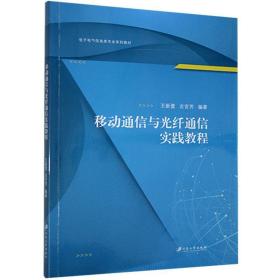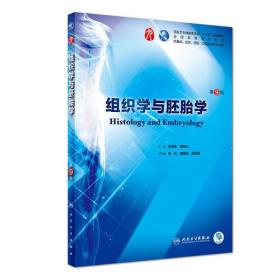
中国学习者英语歧义词习得研究
下单以备注书名为准:《中国学习者英语歧义词习得研究》,正版全新可开发票
¥ 28.5 5.2折 ¥ 55 全新
仅1件
四川成都
认证卖家担保交易快速发货售后保障
作者李海龙 著
出版社中国社会科学出版社
出版时间2019-09
版次1
装帧平装
上书时间2024-10-09
- 在售商品 暂无
- 平均发货时间 15小时
- 好评率 暂无
- 最新上架
商品详情
- 品相描述:全新
图书标准信息
- 作者 李海龙 著
- 出版社 中国社会科学出版社
- 出版时间 2019-09
- 版次 1
- ISBN 9787520341080
- 定价 55.00元
- 装帧 平装
- 开本 16开
- 纸张 胶版纸
- 页数 179页
- 字数 223千字
- 【内容简介】
- 《中国学习者英语歧义词习得研究》试图研究中国英语学习者心理词库中不同类型歧义词的发展特征。基于已有的双语心理词汇表征和发展模型,作者运用不同的实验任务考察了中国英语学习者对不同类型歧义词的加工,发现二语词汇在词形、语义和概念等各层次心理表征之间存在交互作用且一语和二语词汇之间存在跨语言激活和抑制作用,从而阐明不同类型歧义词的表征、提取和发展的不平衡性,以及概念重构对二语词汇知识发展的意义。研究结果有利于深化对二语习得机制的理解,提高英语词汇教学效果。
- 【作者简介】
- 李海龙,男,浙江外国语学院讲师,于山东大学获得文学学士学位,上海交通大学获得文学硕士、博士学位,主要研究方向为二语习得、心理语言学。主持浙江省哲学社会科学规划课题1项,校级重点科研课题两项。在《外语教学与研究》《现代外语》等外语类核心期刊发表论文数篇。为中国翻译协会专家会员,出版译著1部,在《英语世界》等刊物发表译作多篇。主要讲授《实用英语翻译》《应用英语写作》等课程。
- 【目录】
-
CHAPTER 1 INTRODUCTION
1.1 Origin of the Study
1.2 Significance of the Study
1.3 Research Questions
1.4 Definition of Key Terms
1.4.1 Bilinguals
1.4.2 Lexical ambiguity
1.4.3 Semantic priming
1.4.4 Ambiguity advantage
1.4.5 Relatedness of meaning
1.5 Organization of the Book
CHAPTER 2 REPRESENTATION AND PROCESSING OF LEXICAL
AMBIGUITY
2.1 Introduction
2.2 Lexical Ambiguity per se
2.2.1 Syntactic and lexical ambiguity
2.2.2 Critena for lexical ambiguity
2.2.3 Lexical ambiguity as a continuum
2.2.4 Mechanisms of meaning extension
2.3 TheoreticaI Accounts of LexicaI Ambiguity
2.3.1 Lexical ambiguity in theoreticallinguistics
2.3.2 Lexical ambiguity in psycholinguistics
2.4 Feedback Account of the Ambiguity Effect
2.4.1 Interaction between representational levels
2.4.2 Semantic relatedness and its processing implications
2.5 Summa
CHAPTER 3 LEXICAL AMBIGUITY IN THE BILINGUAL MIND
3.1 Introduction
3.2 Lexical Development in Bilinguals
3.2.1 Knowing a word
3.2.2 Constraints of post-puberty lexical development
3.2.3 Lexical developmentin a second language
3.3 Modeling the Bilingual Lexicon
3.3.1 Evidence from semantic primin
3.3.2 Bilingual representation models
3.3.3 Bilingual processing models
3.4 LexicaI Ambiguity and SLA
3.4.1 Translation ambiguity in bilingual
3.4.2 Meaning extension in L2 vocabulary learning
3.5 Summa
CHAPTER 4 SIMPLE LEXICAL DECISION TASK
4.1 Introduction
4.2 Experiment Design
4.2.1 Research questions
4.2.2 Participants
4.2.3 Materials
4.2.4 Procedures
4.3 Results and Findings
4.3.1 Analysis of the reaction time data
4.3.2 Analysis of accuracy rate data
4.4 Discussion
4.4.1 Lexical ambiguity and ambiguity effect
4.4.2 Ambiguity effect across proficiency groups
4.5 Summa
CHAPTER 5 TRANSLATION RECOGNITION TASK
5.1 Introduction
5.2 Experiment Design
5.2.1 Research questions
5.2.2 Participants
5.2.3 Materials
5.2.4 Procedures
5.3 Results and Findings
5.3.1 Analysis of the reaction time data
5.3.2 Analysis of accuracy rate data
5.4 Discussion
5.4.1 Ambiguity type and translation recognitio
5.4.2 Translation ambiguity in develo
5.5 Summa
CHAPTER 6 MEANING RELATEDNESS RATING
6.1 Introduction
6.2 Research Design
6.2.1 Purpose
6 .2 .2Participants
6.2.3 Materials
6.2.4 Procedures
6.3 Results and Findings
6.3.1 Overview of the relatedness rating results
6.3.2 Analysis of the LP group results
6.3.3 Analysis of the HP group results
6.4 Discussion
6.5 Summa
CHAPTER 7 SEMANTICALLY PRIMED LEXICAL DECISION TASK
7.1 Introduction
7.2 Experiment Design
7.2.1 Research questions
7.2.2 Participants
7.2.3 Materials
7 .2 .4 Procedures
7.3 Results and Findings
7.3.1 Results of the semantically primed lexical decision task
7.3.2 Findings of the exit questionnaire
7.4 Discussion
7.4.1 Distinctions within lexical ambiguity
7.4.2 Locus of the semantic priming effect
7.4.3 Language proficiency and inhibitory capacit
7.4.4 Vocabulary learning strategy and metaphorical awareness
7.5 Summa
CHAPTER 8 CONCLUSIONS
8.1 Introduction
8.2 Major Findings
8.3 Implications of the Present
8.3.1 Theoretical implications
8.3.2 Pedagogical implications
8.4 Limitations and Suggestions for Future Studies
8.4.1 Limitations of the present study
8.4.2 Suggestions for future studies
BIBLIOGRAPHY
APPENDICES
点击展开
点击收起
— 没有更多了 —












以下为对购买帮助不大的评价